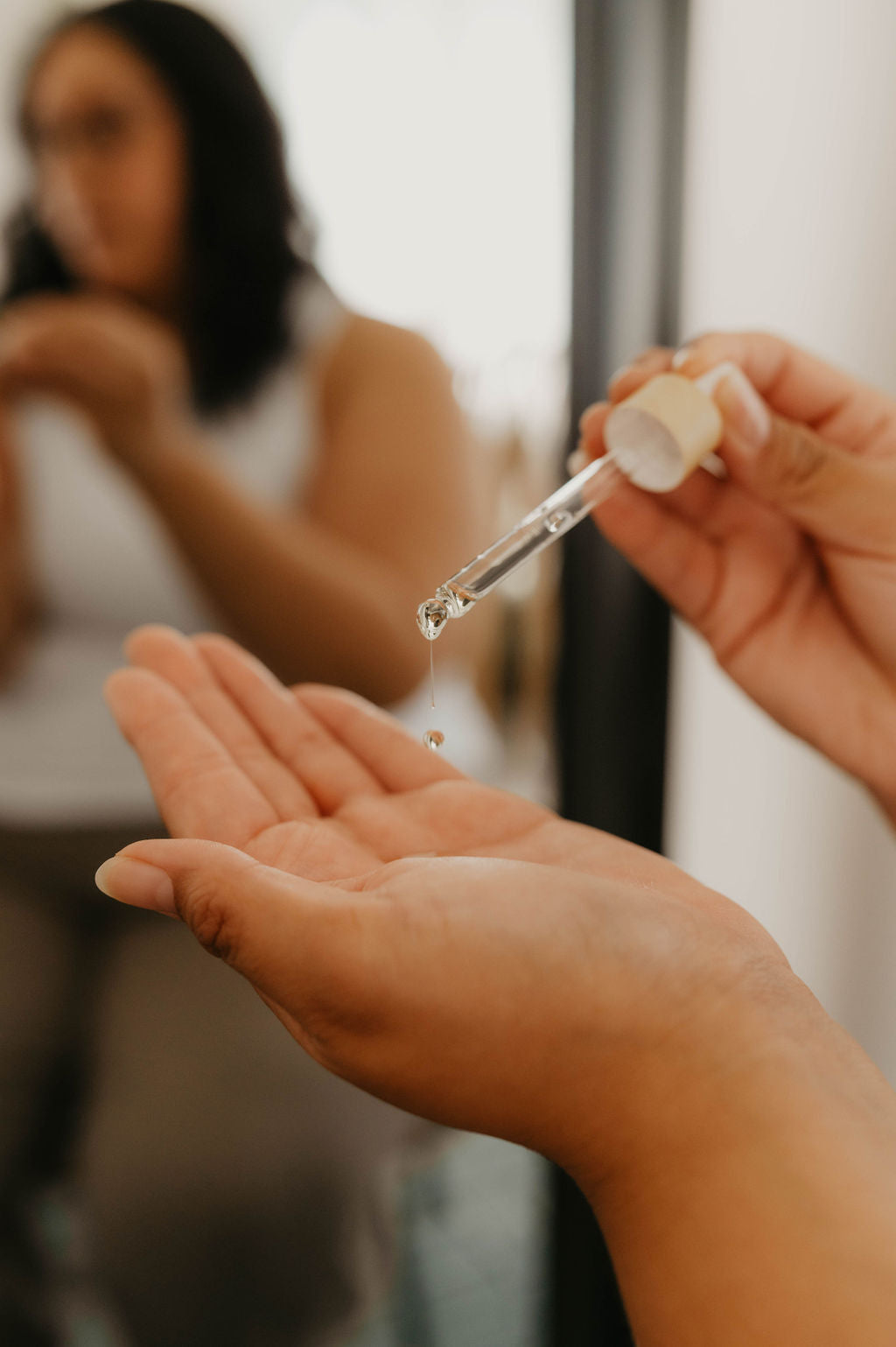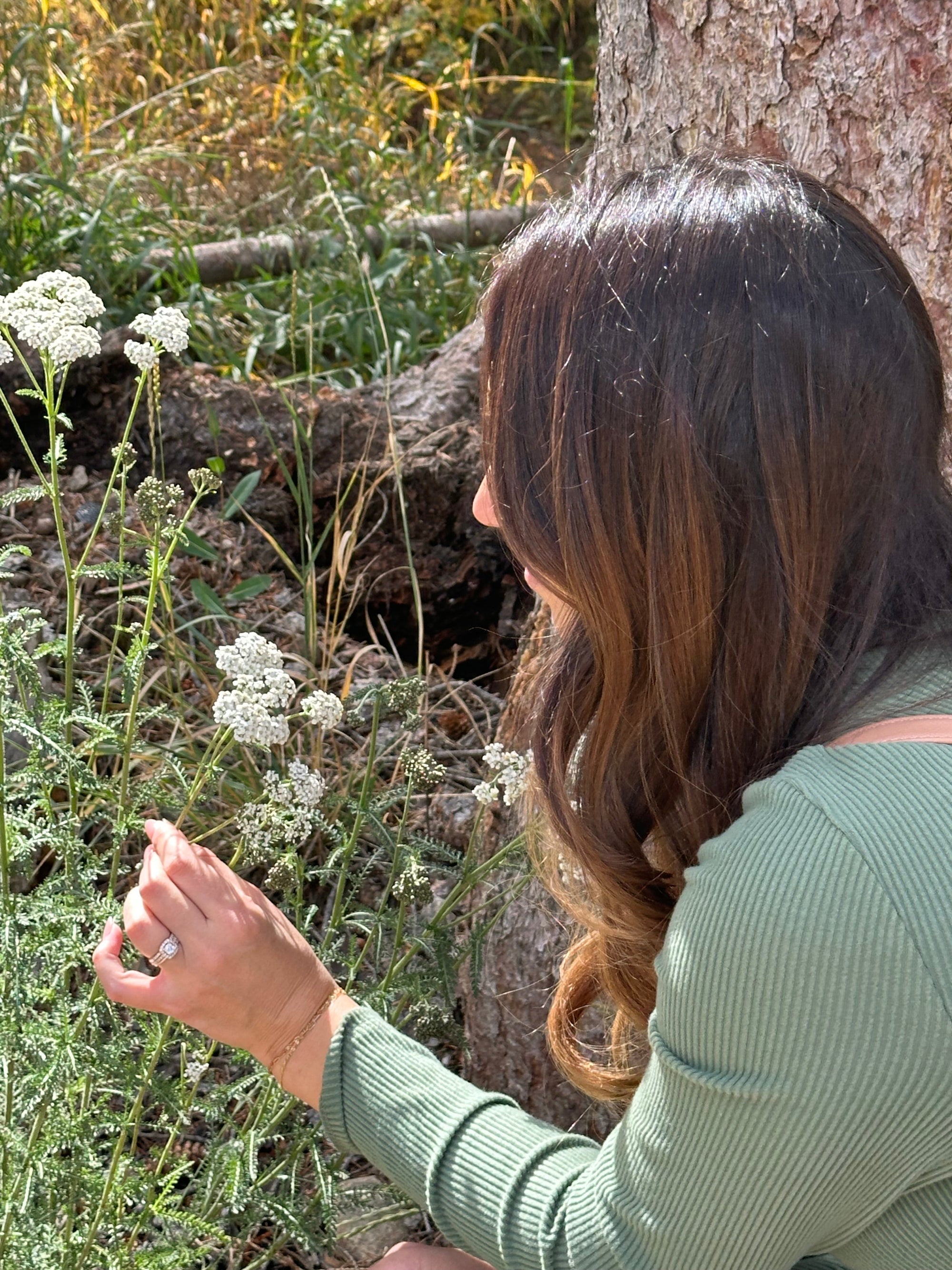It's not until we feel the burning warmth of the sun that we are reminded to use sunscreen. Here in AZ that feeling strikes seemingly overnight, but it is important to remember that suns protection is a MUST all year long. The most damaging burns can come on a beautiful cloudy day, so getting in the habit will be the safety net your skin needs.
Although there are many benefits of the sun, like how vitamin D is a necessity to our skin and body, there can also be a negative impact from excessive UV exposure. UV rays can provide a danger to our skin and overall wellness, but selecting the right sun protectant, and applying diligently can give you peace of mind.
The major question when selecting sun protection is usually which SPF is right for me, but the real question should be chemical sunscreen or mineral sunscreen.
DID YOU KNOW THERE WAS A DIFFERENCE?
Chemical Sunscreens
block the UVB rays (sunburn causing), but allow the UVA rays to penetrate deep into your skin. Here a chemical reaction occurs between the UVA rays and the ingredients of the chemical sunscreen reversing (some of) the effects of the rays that were absorbed, but allowing for damage to be done at a deeper level.
The ingredients found in chemical sunscreens like oxybenzone and octinoxate seep into the bloodstream, lingering in the body for days at a time. Less severe symptoms like redness, itching, irritation and swelling can occur; however, there are more severe effects of increased exposure to these ingredients.
Octinoxate is an endocrine disrupter which mimics estrogen and disrupts your thyroid function. It has been detected in human urine, blood and breast milk. Oxybenzonate is the most chosen active ingredient in sunscreen. Not only does cause many skin allergies and irritations, but it disrupts the production of estrogen in women and testosterone in men. Both ingredients affect your endocrine system which regulates biological processes like metabolism, growth and development, sexual function and reproduction, thyroid function, etc.
And the issue grows further because other products contain these ingredients: shampoos, conditioners, cosmetics, hair dye, nail polish, and even lip balm, which means you are packing on the exposure increasing changes in the body.
Chemical sunscreens (specifically oxybenzone) also impact marine life causing irreversible damage to coral reefs. According to coral.org these are the effects that have been seen:
- Increasing a coral’s susceptibility to bleaching
- Damaging coral DNA which interferes with reproduction
- Causing deformities and growth anomalies
- Disrupting a coral’s hormonal processes for growth and reproduction

Mineral Sunscreens
are just safer, and work better. They use natural ingredients that sit on top of your skin creating a physical barrier between harmful rays and your skin. The common ingredients used in mineral sunscreens are zinc oxide and titanium dioxide. These ingredients are ground into tiny particles allowing them to be less noticeable on the skin, and create a physical barrier to reflect the sun. The effectiveness of titanium dioxide is reduced when the particle size is reduced, so it is paired with zinc oxide to block out both UVB and UVA rays. By not allowing UVA to penetrate the skin, mineral sun screens are eliminating the deeper level skin issues we see in chemical sunscreens.
Unfortunately in 2022 titanium dioxide has been banned in Europe as a possible carcinogen to humans, and is no longer thought to be safe. When seeking out sunscreens it is important to choose one with zinc oxide as the primary protector.
WHAT'S THE DEAL WITH SPF?
SPF is the sun protection factor. Contrary to popular belief that the number is an indication for the amount of time you spend in the sun, the number actually indicates how much longer it takes untanned skin to start to redden with sunscreen applied compared to how long it takes to start reddening without it.
Additionally, the higher the number doesn't indicate the better coverage. In fact, SPF does not increase exponentially - this means that if you use an SPF of 2 it blocks about 50% of UV rays, an SPF of 15 blocks about 93% and an SPF of 50 blocks about 98% of UV rays. That's only a 5% difference in UV protection for an SPF difference of 35!
When selecting your sun protectant, mineral is the better option not only for you, but for the environment. Watch out for those tricky green-washing terms like natural and check the ingredients. Don't forget to reapply your sun protectant each hour, especially around water for the best results.
Sources:
CFR - Code of Federal Regulations Title 21. accessdata.fda.gov. (n.d.). Retrieved April 10, 2022, from https://www.accessdata.fda.gov/scripts/cdrh/cfdocs/cfcfr/CFRSearch.cfm?fr=352.50
Miller, K. (2021, November 2). Here's why everyone is freaking out over oxybenzone in sunscreen. Prevention. Retrieved April 10, 2022, from https://www.prevention.com/health/a27556739/oxybenzone-sunscreen-safety/
Octinoxate. Safe Cosmetics. (n.d.). Retrieved April 10, 2022, from https://www.safecosmetics.org/get-the-facts/chemicals-of-concern/octinoxate/
Pedroja, C. (2021, April 8). Octinoxate in cosmetics. Healthline. Retrieved April 10, 2022, from https://www.healthline.com/health/octinoxate#where-to-look-for-it
Sunscreen and corals. Coral Reef Alliance. (2021, September 1). Retrieved April 10, 2022, from https://coral.org/en/blog/sunscreen-and-corals/?gclid=Cj0KCQjwgMqSBhDCARIsAIIVN1WlMHuzA1V97cm7uEyOxpYQvTGbLbFdsyA_QG8qpuxYXH7FqR_GmsEaAtAyEALw_wcB
U.S. National Library of Medicine. (n.d.). Octinoxate. National Center for Biotechnology Information. PubChem Compound Database. Retrieved April 10, 2022, from https://pubchem.ncbi.nlm.nih.gov/compound/Octinoxate


